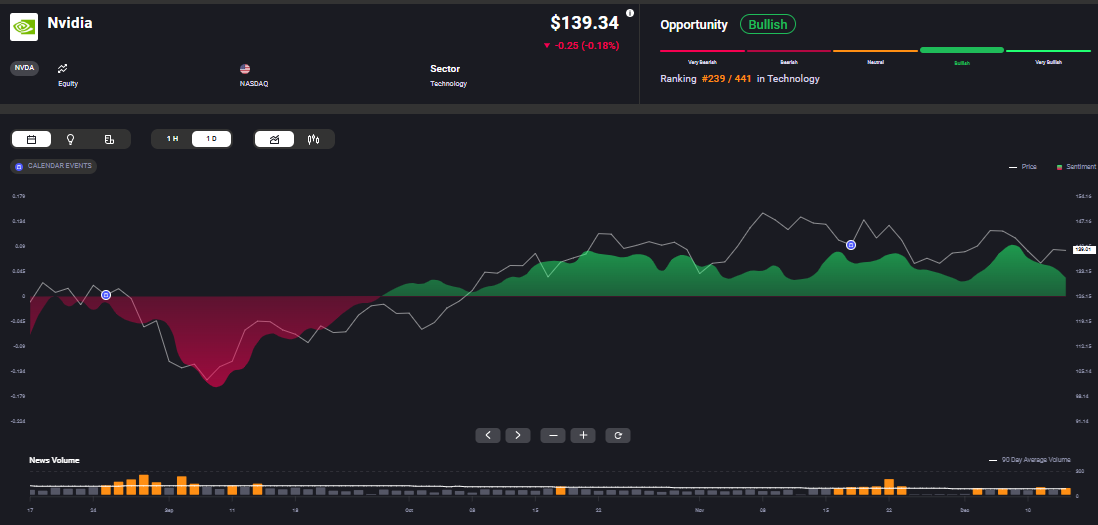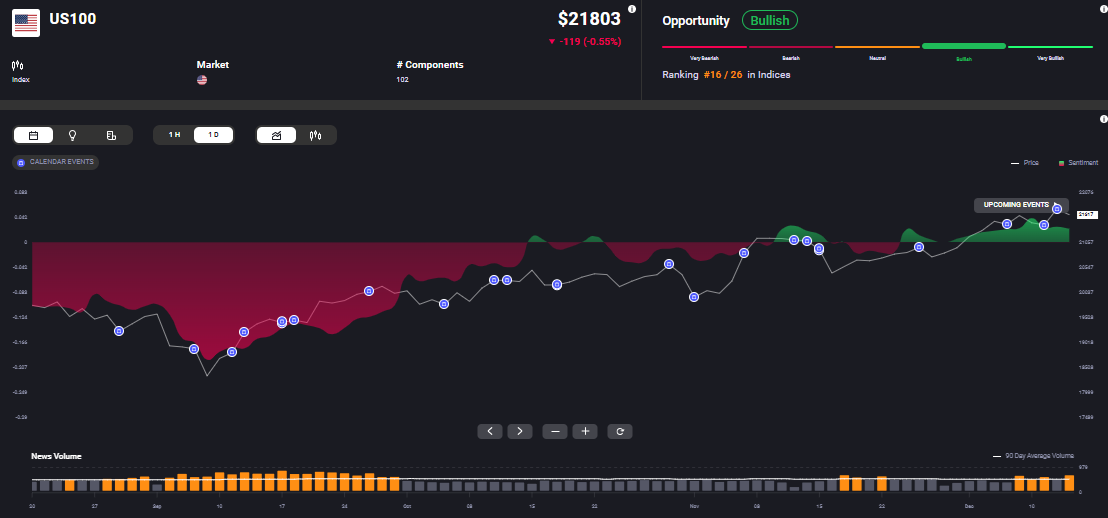On November 5, 2025, Nvidia surpassed Apple’s market cap to become the world’s most valuable publicly traded company. The chipmaker’s market cap rose almost 3% to reach $3.43 trillion, beating Apple’s $3.4 trillion, albeit by a hair. Investors have continued to demonstrate confidence in Nvidia's ability to sustain its meteoric growth rate and remain the leader in the AI market. Little wonder then that the stock is up almost 200% YTD as of December 13.
Nvidia, which until recently, was a name known only in the gaming world, has become the leading supplier of GPUs that are used to develop and implement advanced AI-based software. OpeAI's ChatGPT is a prime example of this. The company's stock has risen almost 2400% over the last 5 years while its revenue has more than doubled in each of the last 5 quarters, even growing 3x in 3 of these quarters.
Is Nvidia’s Future Bright?
Analysts at Citi, HSBC and Morgan Stanley believe that Nvidia’s market cap could cross the $4 trillion mark, something no publicly traded company has achieved to date. Demand for the company’s AI chips remains strong, with the overall AI market forecasted to grow to $1 trillion by 2027. Nvidia is well-positioned to benefit from this growth, with its new AI superchips, Blackwell, scheduled for launch in early 2025.
Several other factors are likely to support continued growth for Nvidia.
- Revenue: Nvidia appears well positioned to meet its guidance of record revenue of $128.7 billion in FY2025, representing a 111% increase from FY2024. Some estimates say that its revenue could reach $146.87 billion by 2026.
- Earnings: FactSet data suggests that the CAGR of Nvidia’s earnings per share could reach 35.1% over the next two years.
- Demand: Demand for the company’s products is expected to increase due to the growing AI market and expansion of Nvidia’s data center capabilities.
- GPU Demand: Demand for the next-generation graphics processing unit, the GB200, is expected to reach 3 million in 2026.
- Autonomous Vehicles: Nvidia has a first-mover advantage in the autonomous driving market with its Drive PX self-driving platform.
The company achieved several milestones in 2024, apart from its market cap. The stock’s historic surge led Nvidia to undertake a 10-for-1 stock split in June while the company was invited to join the DJIA, replacing Intel on the index, on November 1.
However, not every milestone excites investors as much. For instance, Nvidia reported its Q3 earnings on November 20, with both EPS and revenue beating consensus. Yet, the stock fell 1% in after-hours trading. By the following Monday, November 25, the share price had declined 4.2% amid reports of an executive from Nvidia having met with Chinese officials. On the other hand, the stock rose to record highs following Trump’s win in the US presidential election.
Market sentiment for the stock has remained bullish through 2024 and could remain optimistic going forward, as indicated by Acuity’s AssetIQ widget.

What Could Go Wrong?
Any potential hiccups with the launch of the Blackwell chips could adversely affect Nvidia’s stock. And if the share price stagnates for a while, Apple might manage to pull ahead, regaining its crown as the most valuable company. After all, Apple’s growth potential also appears bright.
Having said that, Nvidia is the leading supplier of GPUs for AI-based software and demand for these chips is significantly outstripping supply for now. This is a major reason for the company’s results beating expectations. Nvidia’s CEO, Jensen Huang, is optimistic that data centre operators will invest $1 trillion to upgrade their infrastructure over the next 4 years to meet the demand from AI developers. This is good news because about 80% of Nvidia’s revenue is expected to be contributed by its data centre segment.
Against this backdrop, numerous analysts have raised their target price on the stock, with some saying that the share price could cross $200 in 2025. Moves in the stock price have had significant impacts on the performance of the Nasdaq this year, an effect that might now be seen in the DJIA. Acuity’s AssetIQ reflects that sentiment for the Nasdaq 100 is bullish, just like the sentiment for Nvidia.

Wrapping Up
The currently high valuation increases the risk of a major fall if the company stumbles at any point. We saw this in September 2024, after Nvidia reported a Q3 beat on net income and revenue but its guidance disappointed. The company had briefly surpassed Apple’s market cap in June, but this announcement led the stock to lose more than $200 billion in a single day.
This highlights the importance of keeping an eye on a stock’s fundamentals and following a long-term mindset while dealing with short-term volatility. News events usually have short-lived effects on stock performance, which can be captured by traders with short-term trading strategies.
For now, Nvidia’s long-term prospects appear bright with the AI wave just beginning. Make sure you offer your traders powerful tools for market analysis to capitalise on the stock’s potential.
Market Commentary

